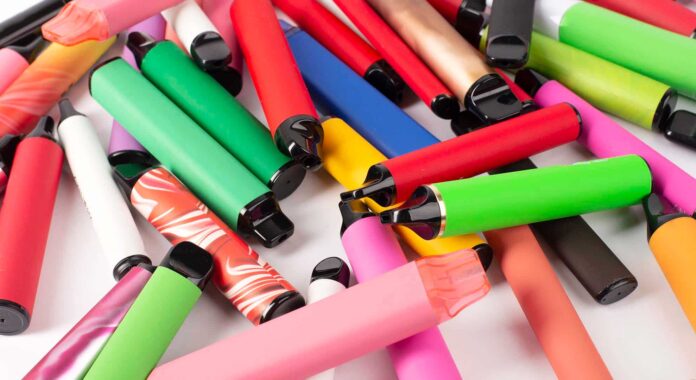The disposable vape ban is reshaping the UK’s vaping landscape, with new regulations set to take effect on June 1, 2025. This bold move aims to curb the environmental havoc caused by single-use vapes and protect young people from nicotine addiction. Suppliers now face a tight deadline to clear their stock, while retailers and consumers brace for a shift in habits. The government’s decision, announced in late 2024, reflects growing concerns about waste and youth health, sparking debates among vapers, environmentalists, and health advocates. Let’s dive into what this ban means, why it’s happening, and how it’s changing the UK’s approach to vaping.
Why the Disposable Vape Ban Matters
Single-use vapes have exploded in popularity, but their environmental toll is staggering. In 2022, over 40 tonnes of lithium from discarded vapes ended up in UK landfills—enough to power 5,000 electric vehicles. These devices, often brightly colored and flavored, also appeal to younger audiences, raising alarms about underage vaping. The government’s response? A comprehensive disposable vape ban across England, Wales, and Scotland, designed to tackle both waste and public health. By targeting single-use products, policymakers hope to reduce litter and discourage non-smokers, especially teens, from picking up the habit.
The ban doesn’t outlaw vaping entirely. Reusable vape devices and refillable pods remain legal, offering alternatives for adult smokers transitioning from cigarettes. However, the convenience of disposables—grab, use, toss—has made them a go-to for many. With the ban looming, manufacturers and retailers are scrambling to adapt, while consumers face a learning curve to switch to sustainable options.
Environmental Impact of the Disposable Vape Ban
Disposable vapes contribute heavily to the UK’s waste problem. Each device contains plastic, metal, and lithium-ion batteries, which are rarely recycled properly. Reports estimate that millions of vapes are thrown away annually, clogging landfills and leaching harmful chemicals into the soil. The disposable vape ban aims to reverse this trend by forcing the industry toward eco-friendly alternatives. Reusable devices, which use refillable e-liquid pods, produce less waste and align with the UK’s broader sustainability goals.
| Disposable Vapes | Reusable Vapes |
|---|---|
| Single-use, discarded after 600-800 puffs | Refillable, lasts months with proper care |
| High waste: plastic, lithium, and metal | Lower waste: reusable components |
| Rarely recycled properly | Easier to recycle responsibly |
The ban also addresses the visual blight of vape litter. Beaches, parks, and city streets are increasingly dotted with discarded devices, prompting local councils to push for stricter regulations. By June 2025, the hope is that cleaner public spaces will reflect the ban’s success.
Protecting Youth from Vaping’s Grip
Beyond the environment, the disposable vape ban targets a growing public health concern: youth vaping. Brightly packaged, fruit-flavored vapes have drawn in teenagers, with studies showing a spike in underage use. The government’s data suggests that one in five secondary school students has tried vaping, often lured by flavors like bubblegum or mango. By banning disposables, officials aim to make vaping less accessible and appealing to kids, forming part of a broader “Smokefree Generation” plan that also restricts tobacco sales to anyone born after January 1, 2009.
Retailers will face tougher enforcement, with fines for selling vapes to minors doubling under new rules. Schools and parents have welcomed the ban, though some worry about loopholes, like black-market sales or online purchases. Public health campaigns are already rolling out to educate teens on vaping’s risks, emphasizing nicotine’s addictive pull.
Challenges and Pushback
The disposable vape ban isn’t without critics. Small businesses, particularly vape shops, fear revenue losses as disposables account for a hefty chunk of sales. Some adult vapers argue the ban punishes responsible users, forcing them to navigate pricier, less convenient reusable systems. Meanwhile, the vaping industry has raised concerns about job cuts and innovation stifling, with some manufacturers pivoting to refillable devices to stay afloat.
Enforcement poses another hurdle. Illegal sales of disposables could thrive post-ban, especially through unregulated online platforms. Authorities are ramping up inspections and collaborating with trading standards to crack down on non-compliant retailers. Still, the black market remains a wildcard, potentially undermining the ban’s goals.
What’s Next for Vapers?
As the June 2025 deadline approaches, the disposable vape ban is pushing the UK toward a greener, healthier future. Consumers are encouraged to explore reusable vapes, which offer similar flavors and nicotine strengths with less environmental impact. Retailers are stocking up on pod systems and e-liquids, while manufacturers innovate to meet demand for sustainable options. Public awareness campaigns will play a big role in easing the transition, helping vapers make informed choices.
The ban’s success hinges on enforcement, education, and industry adaptation. If effective, it could set a precedent for other countries grappling with similar issues. For now, the UK is taking a stand against waste and youth vaping, hoping to strike a balance between personal freedom and public good.
Stay informed about the disposable vape ban and explore reusable vaping options to make the switch before June 2025. Visit your local vape shop or check government websites for guidance on sustainable alternatives.
